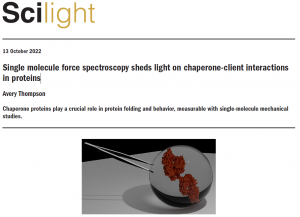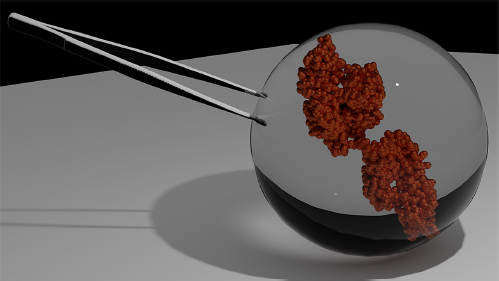
Proteins walk a long road between birth and death, but they never walk it alone. At all stages of their lives, proteins are accompanied by chaperones: helper proteins that work to fold their clients, escort them where they are needed, and usher them to their final resting places. Studying these chaperones from a mechanical perspective can provide insights into chaperone-client interactions and chaperone regulation.
One of the best tools for performing these studies is single molecule force spectroscopy. Rief and Žoldák described multiple single molecule techniques and outlined what they can reveal about chaperone proteins.
“Mechanical studies make it possible to understand how and when the chaperone releases their client, which form is recognized by the chaperone, and where and how the chaperone binds to the client,” said author Gabriel Žoldák.
Typically, these experiments involve tethered client proteins held under load in the presence of free chaperone proteins. This method allows researchers to observe the chaperone’s binding sites, the state of the client during the binding process, and the speed and concentration of reactions. Alternatively, the chaperone itself can be held under load and experiments can probe its inner workings in the presence of clients. With future spectroscopic techniques, researchers can learn even more about this unique protein relationship.
“I look forward to seeing the application of orthogonal spectroscopic probes that provide an additional physicochemical characterization of single molecules in real-time with super high spatial and temporal resolution,” said Žoldák. “Such correlative singlemolecule methods may further improve our knowledge of chaperones.”
Source: “Single-molecule mechanical studies of chaperones and their clients,” by Matthias Rief and Gabriel Žoldák, Biophysics Reviews
(2022). The article can be accessed at https://doi.org/10.1063/5.0098033.
Published by AIP Publishing (https://publishing.aip.org/authors/rights-and-permissions).
AIP Scilight. 2022, 421107-1; https://doi.org/10.1063/10.0014868
© Published by AIP Publishing

